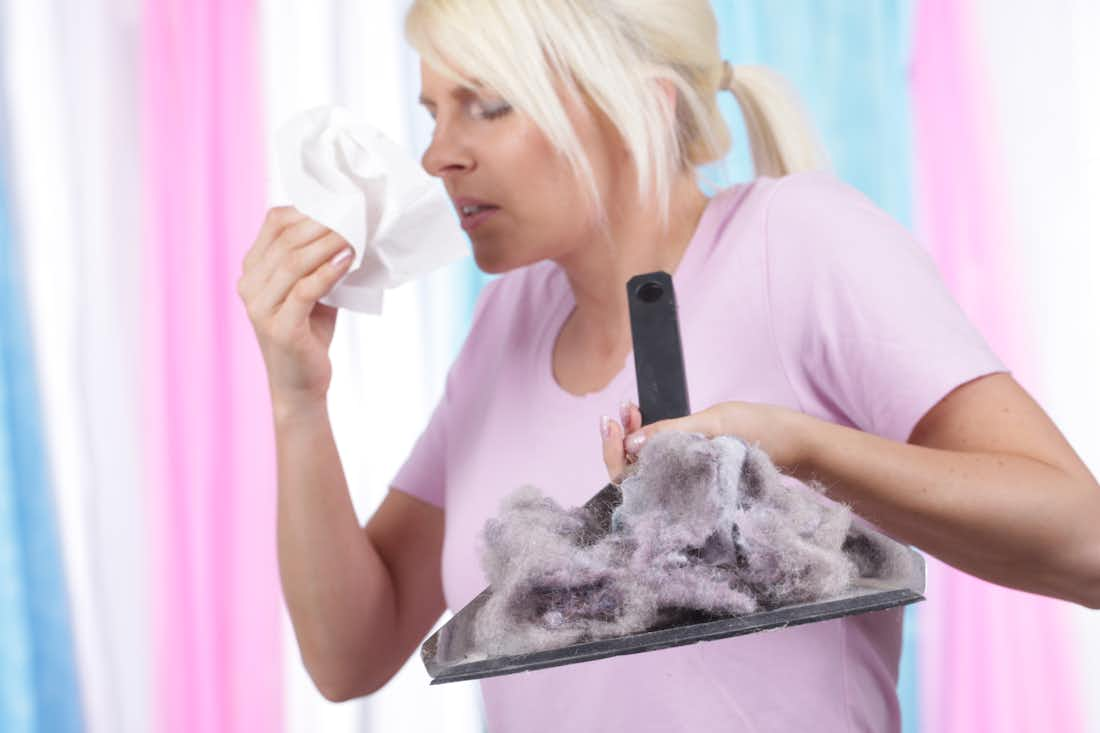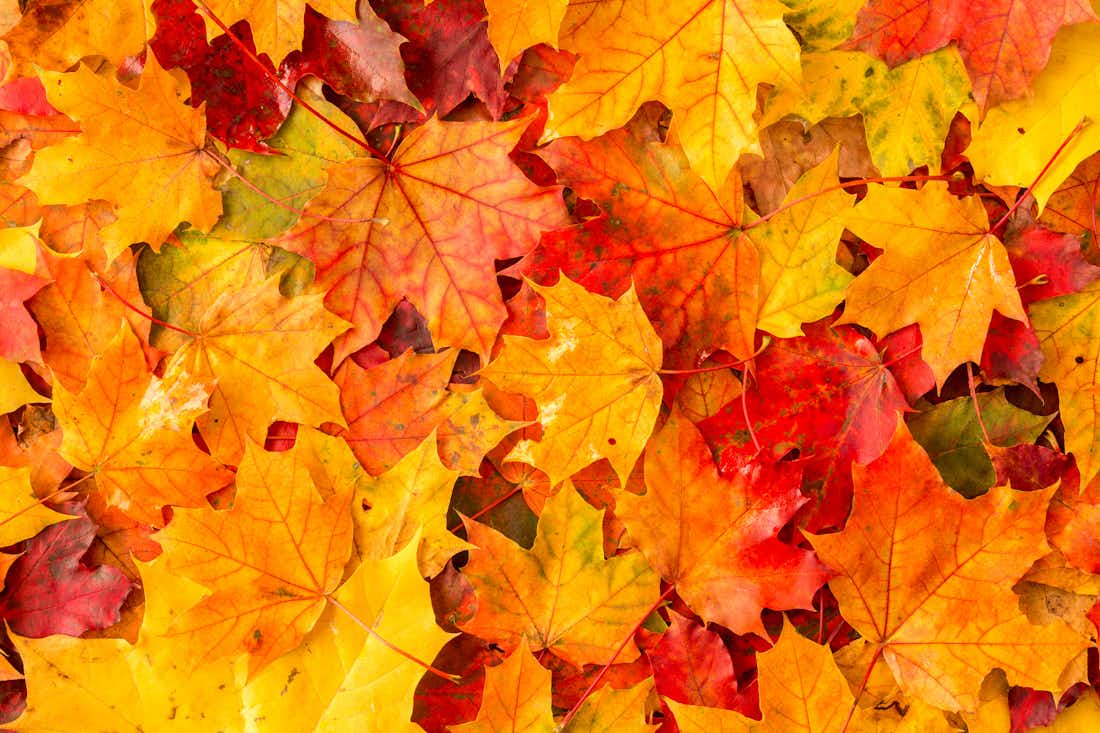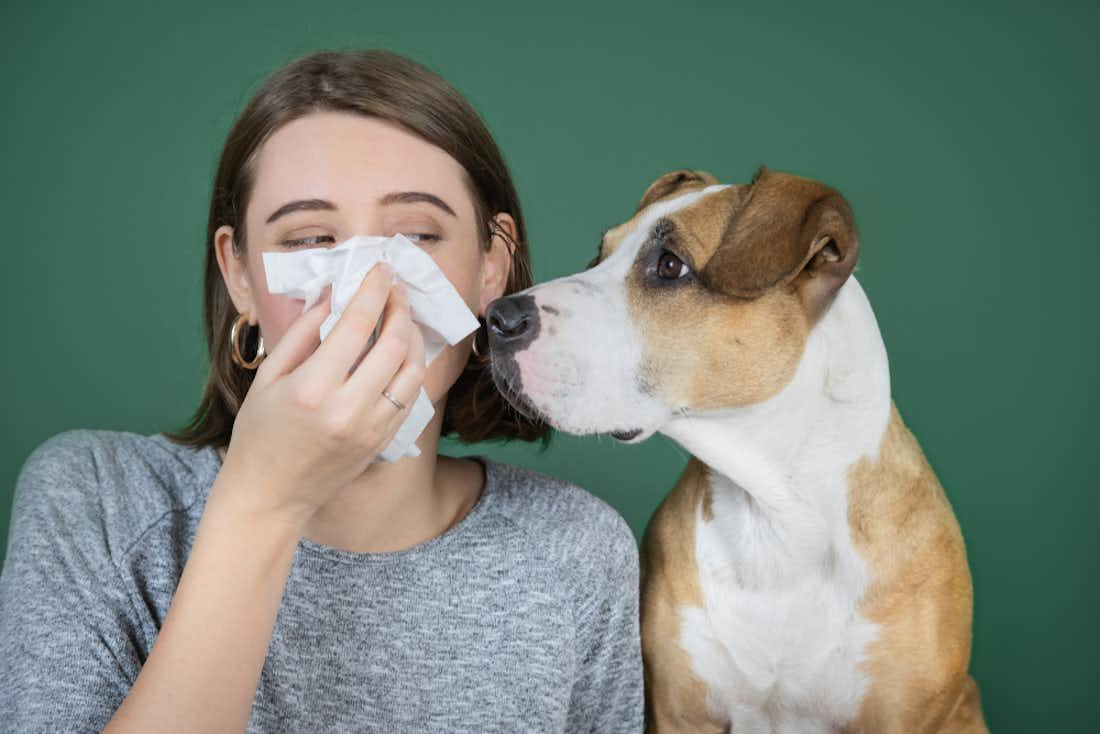May 24, 2022
Allergy Symptoms in Kids
6 minute read
Allergies, also known as allergic rhinitis, can affect anyone. However, children are much more susceptible as compared to adults. It’s one of the most common health issues affecting children in the US, with over 7% of all children being diagnosed with hay fever (seasonal allergies) in 2018 alone.
While it’s possible to outgrow environmental allergies, tiny tots might need to wait until adulthood to start to feel some relief. If your child seems to be acting differently from normal, they might be inundated by stubborn allergies. Here are some of the most common symptoms and ways to bring your child relief.
1. Sneezing
Sneezing is a defense mechanism deployed by the body to expel foreign particles in the sinuses. Pretty much anything in your kid’s nose might cause them to start sneezing up a storm, but allergies specifically are one of the main contributors.
Airborne allergens, such as pollen, dust mites, or mold spores are the main culprit behind sneeze attacks. This is because the tiny particles can enter the nose, irritating the nasal linings and causing inflammation.
Nasal spray antihistamines may help alleviate your child’s symptoms of sneezing and an itchy nose. However, simply blowing their nose to eradicate mucus can be enough to get rid of the nasty foreign particles causing this symptom.
2. Stuffy Nose
While sneezing might mean that mucus is flowing freely out of your child’s nose, congestion means the opposite. Inflammation in the nasal passages caused by allergies can make your child’s nose feel tight and stuffy.
This common allergy symptom can make it difficult for kids to fall asleep, and you might also notice that their moods and behaviors shift as a result. Using nasal sprays or decongestants is one of the best ways to alleviate nasal congestion — these work by reducing swelling in the nostrils to allow mucus to flow more freely.
You may also be able to help your child use a neti pot to remove stuck mucus in the nose. While these might be uncomfortable for some children, they are an effective means to expel mucus and allow your child to breathe more easily.
3. Itchy, Watery Eyes
If you’re an adult with allergies, you already know how frustrating the feeling of itchy, watery, allergy eyes can be. And for children, it feels just as annoying. Airborne allergens and irritants like tree pollen or dust mites often cause this symptom.
Inflammation of the blood vessels in the eye due to allergies can cause feelings of itchiness or discomfort, often leading to watering as a way for your body to try to expel the foreign substance.
You can give your child eye drop antihistamines to reduce swelling and alleviate some of the symptoms. Of course, this is easier said than done if you have a child who’s always on the move. Always check with your doctor before using any medication.
Alternatively, you can use a cold compress over the eyes, as this will bring down swelling and help reduce the feeling of itchiness. Try to teach your child not to scratch or rub their eyes if they itch during pollen season, as this can cause optical damage and potentially transfer more allergens from their hands into their eyes.
4. Rash or Hives
Hives are a reddened, often itchy bump that appears on the skin during an allergic reaction. These are often accompanied by a rash and general reddening of the surrounding skin. Airborne allergens and irritants like tree pollen or dust mites often cause this symptom.
While hives or rashes are often harmless and painless, they can still be scary for your child to see on their skin. You can reduce the appearance of these rashes by using cold or warm compresses over the affected area to bring down swelling and reduce the unsightly appearance.
Additionally, since these spots will likely be itchy, you can use over-the-counter anti-itch creams on affected areas as long as the skin is not broken. Some people have also found relief by taking a warm bath to reduce itching.
Similar to itchy, watery eyes, do your best to teach your child not to scratch or pick at their hives, as this can leave an open wound and increase the risk of infection.
5. Coughing
Coughing is a way for the body to remove harmful substances within the throat or lungs. It’s a common symptom of allergies that are often seen with airborne, inhalable triggers like pollen or mold.
Coughing is often accompanied by sore throat or tickling in the throat, which can be alleviated by using lozenges. Additionally, oral antihistamines can work to block the effects of histamine – the substance responsible for causing allergy cough in the first place.
Since coughing can also be a symptom of colds and the flu, and it’s an easy way to spread germs from one person to the next, it’s important to teach your child to cover their mouth with the inside of their elbow to cut back on the spread of germs. Even though allergies are not contagious, this is a good habit to teach your child from a young age so they can be more aware as they grow older.
6. Runny Nose
A runny nose is no fun. While it’s easy to dismiss a runny nose as yet another cold, a runny nose is also a sign of an allergy to something in the environment. Kids suffering from environmental allergies may have a clear, runny nose that goes with it.
When airborne allergens come into contact with the nasal <span style="text-decoration:underline;">mucosa</span> or the type of tissue found along the nasal packages. These mucous membranes are typically moist to trap incoming allergens and infections from entering the body and spreading to other systems.
The small hairs, or cilia, which line the nose, help mucous flow into the throat. But, when allergens set in, the cilia are unable to do their job. The end result is a runny nose.
Young kids may have trouble blowing their noses on their own, so an adult may need to help hold the tissue in place. Help your children learn how to properly blow their runny noses, dispose of the tissue, and then wash their hands to better prevent the spread of germs. Antihistamines, eye drops, and nasal sprays may be recommended in the treatment of seasonal allergies in children.
7. General Itching
The eyes aren’t the only place to feel itchy during allergy season. While some kids break out in hives or a rash, as we saw above, for other kids, allergy season brings on a bit of itching. Some kids may feel general itchiness in their nose, the roof of their mouth, or their throat.
To help relieve some of the itches, make sure your child is encouraged to drink plenty of liquids. Warm beverages, such as tea, can help soothe an itchy or scratchy throat. A humidifier and over-the-counter allergy medicines could help relieve the itchiness that stems from environmental allergies too.
8. Wheezing and Other Asthma Symptoms
Asthma, a condition in which the airways narrow and swell, is a condition that goes hand in hand with allergies. Often, when allergies are triggered, asthma symptoms worsen.
One of the most common symptoms associated with asthma is wheezing, which occurs when the airways become blocked by mucus. Your child may start to wheeze during each breath when exposed to their allergy triggers, or they may start to clear their throat more frequently than normal.
They can use inhalers to quickly reduce inflammation and increase their ability to breathe freely if they frequently have asthma.
Additionally, it can help to keep your child’s living space moist to loosen up mucus. This can be done by using a humidifier in their bedroom to increase the humidity. You generally don’t want humidity to exceed 50%, as this can foster mold growth, increase dust mites and worsen some of their symptoms.
9. Dark Under-Eye Circles
If your child experiences dark under-eye circles, it’s easy to think your child isn’t receiving enough quality sleep or isn’t sleeping long enough, period. But dark circles under a child’s eye may be due to something other than a lack of sleep. Those circles could be caused by allergens.
Allergic facies or periorbital hyperpigmentation is a common allergic reaction in children (and adults) who have environmental allergies. They are sometimes referred to as “allergic shiners.” When allergies strike, they can reduce blood flow. That reduced blood flow results in the veins under the eyes darkening and expanding.
Depending on the age of the child, nasal sprays and general over-the-counter medications can aid in slowing down the symptoms of an allergic response. Sometimes a child will grow out of their allergies. But, if the dark circles don’t disappear when the pollen count drops, it may be time to speak with your pediatrician to rule out other causes (like low iron).
How Can I Treat My Child’s Allergies?
Children are more resilient than adults, but that doesn’t mean that their allergies won’t make them feel less than themselves. The good news is that allergy treatments in children are often just as effective as they are for grown-ups.
Antihistamines
Histamines are a chemical released by the immune system during an allergic reaction that is responsible for a wide range of symptoms that often coincide. Sneezing, wheezing, runny nose, itchy eyes, and more can all be attributed to histamines.
However, you can use antihistamine medications to block the effects of this chemical and bring about relief. Children ages twelve and older can typically take about half the recommended adult dosage of antihistamines.
For children under the age of 12, be sure to speak with a doctor before using oral antihistamines to quell their allergy symptoms.
Allergy Immunotherapy
Allergy immunotherapy, or AIT, is a form of allergy treatment that works to quell the underlying causes of allergies – not just the symptoms. It works by gradually exposing the immune system to an allergen trigger over time until the body gains a tolerance.
Children as young as five years old can get allergy shots, which is the typical method for administering this revolutionary procedure. However, a painless alternative, sublingual immunotherapy, might also apply to your child’s situation.
To learn more about how AIT can improve your child’s allergies, take a free allergy consultation with Cleared to be connected with a licensed allergist who can provide a personalized treatment method for their allergies and asthma.
In Conclusion
Allergies can ruin someone’s day at any age, but for children specifically, it can definitely make them grumpy, fatigued, or downright mad. Kids' allergies' symptoms look similar to those you’d see in adulthood, including sneezing, wheezing, tightness in the throat, itchy eyes, coughing, and congestion.
While antihistamine medications can typically only be used for children ages 12 and older, allergy immunotherapy can be administered to children as young as five. Not to mention, many kids outgrow their allergies over time, so it might just take a little bit of patience.
With that said, they don’t need to let allergies keep them from being themselves. Cleared is an online allergy clinic that can provide them with personalized relief from the comfort of home. Learn more about our relief mission and take a giant leap towards relief.
Sources:
Antihistamine (Oral Route, Parenteral Route, Rectal Route) Proper Use | The Mayo Clinic.
Allergy Shots (for Parents) | Nemours KidsHealth.
[What are the changes in the nasal mucosa caused by allergic rhinitis?] | NCBI



